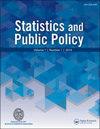2020年和2024年的民调和美国总统大选
IF 1.5
Q2 SOCIAL SCIENCES, MATHEMATICAL METHODS
引用次数: 0
摘要
可以说,美国公共政策的唯一最大决定因素是总统的身份。如果民意调查可信,它不仅能提供对总统选举结果的预测,还能对这些结果产生影响。展望2024年美国总统大选,并认识到2020年总统大选前的民意调查受到了尖锐的批评,我们考虑这种严厉的评估是否有必要。首先,我们将探讨由复杂的聚合器FiveThirtyEight处理的此类民意调查是否成功地预测了2020年各州的实际结果。我们使用以前没有使用过的定制统计方法来评估FiveThirtyEight的预测,这些方法考虑了类似州的选举结果之间可能存在的相关性。我们发现,综合来看,民调机构和FiveThirtyEight在预测谁将在个别州获胜方面做得非常出色,即使是在那些预测难度较大的“临界点”州。然而,我们也发现,FiveThirtyEight低估了唐纳德·特朗普(Donald Trump)在各州的投票份额,虽然程度不大,但在统计上具有显著意义。我们进一步考虑当更原始的聚合器Real Clear Politics将其结果合并时民意调查的表现,然后考虑在没有聚合的情况下单个全州民意调查的表现如何。结果显示,“真实清晰政治”和个人民调都表现得出奇地好。本文章由计算机程序翻译,如有差异,请以英文原文为准。
The Polls and the US Presidential Election in 2020 ….and 2024
Arguably, the single greatest determinant of US public policy is the identity of the president. And if trusted, polls not only provide forecasts about presidential-election outcomes but can act to shape those outcomes. Looking ahead to the 2024 US presidential election and recognizing that polls before the 2020 presidential election were sharply criticized, we consider whether such harsh assessments are warranted. Initially, we explore whether such polls as processed by the sophisticated aggregator FiveThirtyEight successfully forecast actual 2020 state-by-state outcomes. We evaluate FiveThirtyEight’s forecasts using customized statistical methods not used previously, methods that take account of likely correlations among election outcomes in similar states. We find that, taken together, the pollsters and FiveThirtyEight did an excellent job in predicting who would win in individual states, even those “tipping point” states where forecasting is more difficult. However, we also find that FiveThirtyEight underestimated Donald Trump’s vote shares by state to a modest but statistically significant extent. We further consider how the polls performed when the more primitive aggregator Real Clear Politics combined their results, and then how well single statewide polls performed without aggregation. It emerges that both Real Clear Politics and the individual polls fared surprisingly well.
求助全文
通过发布文献求助,成功后即可免费获取论文全文。
去求助
来源期刊

Statistics and Public Policy
SOCIAL SCIENCES, MATHEMATICAL METHODS-
CiteScore
3.20
自引率
6.20%
发文量
13
审稿时长
32 weeks
 求助内容:
求助内容: 应助结果提醒方式:
应助结果提醒方式:


